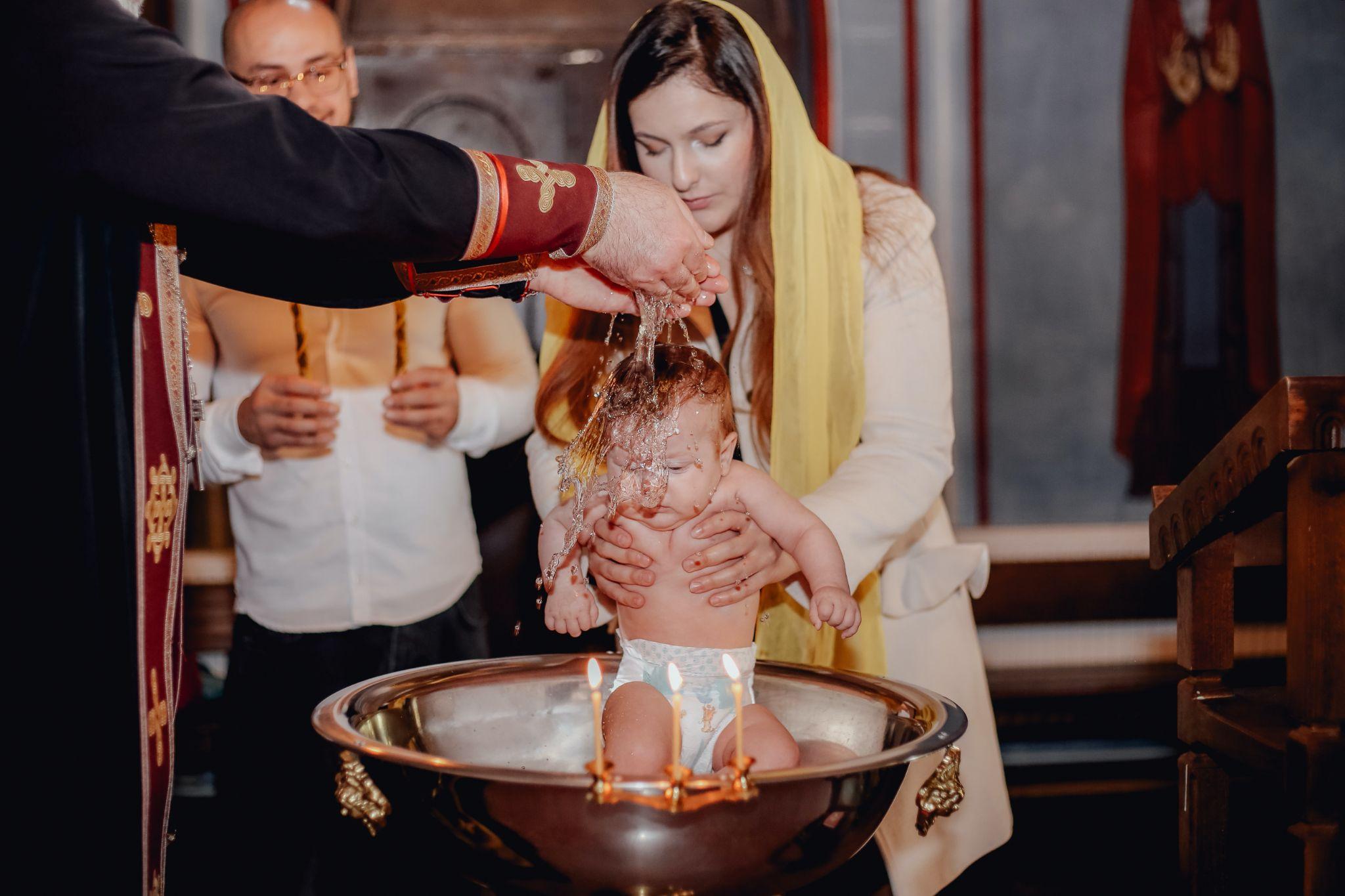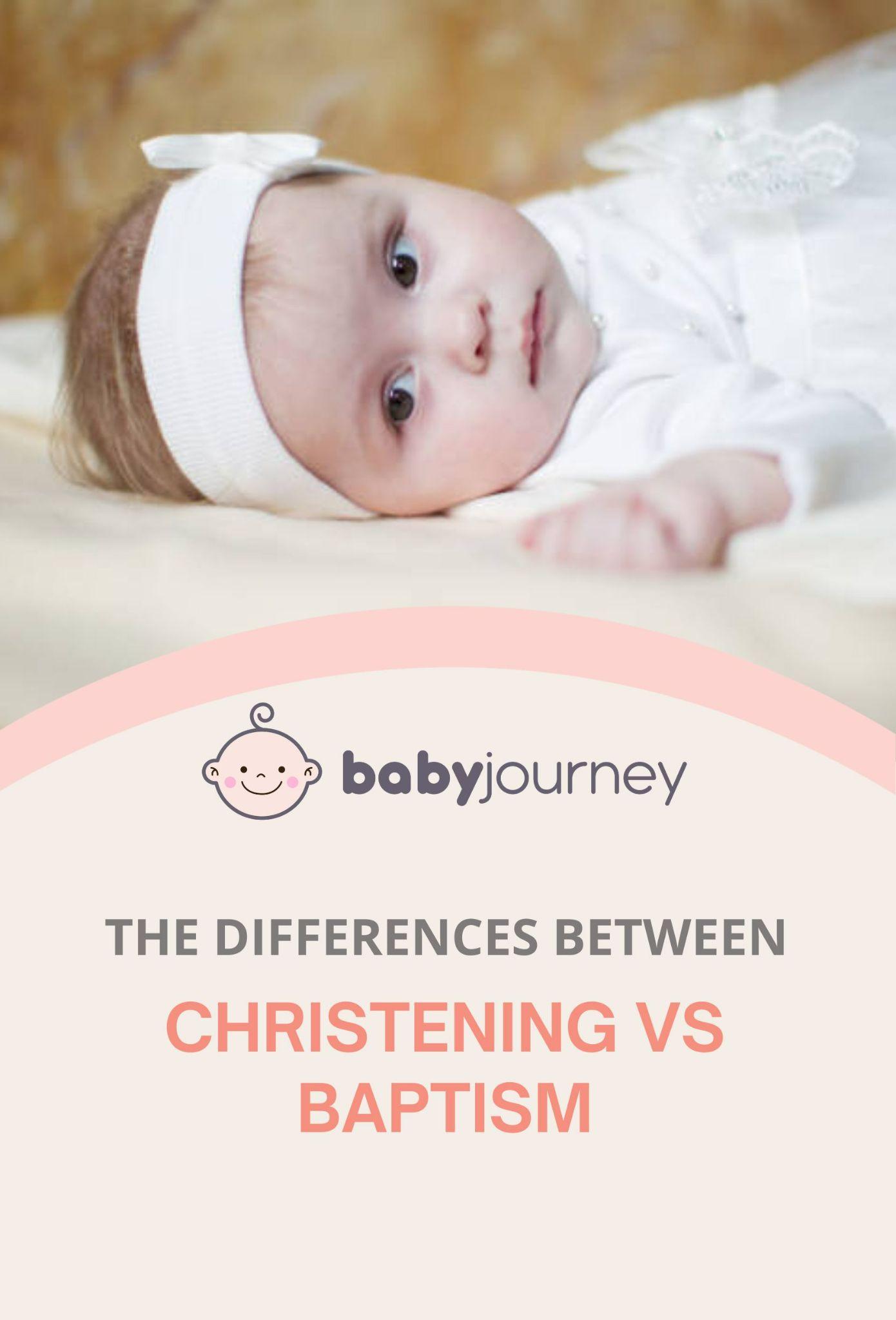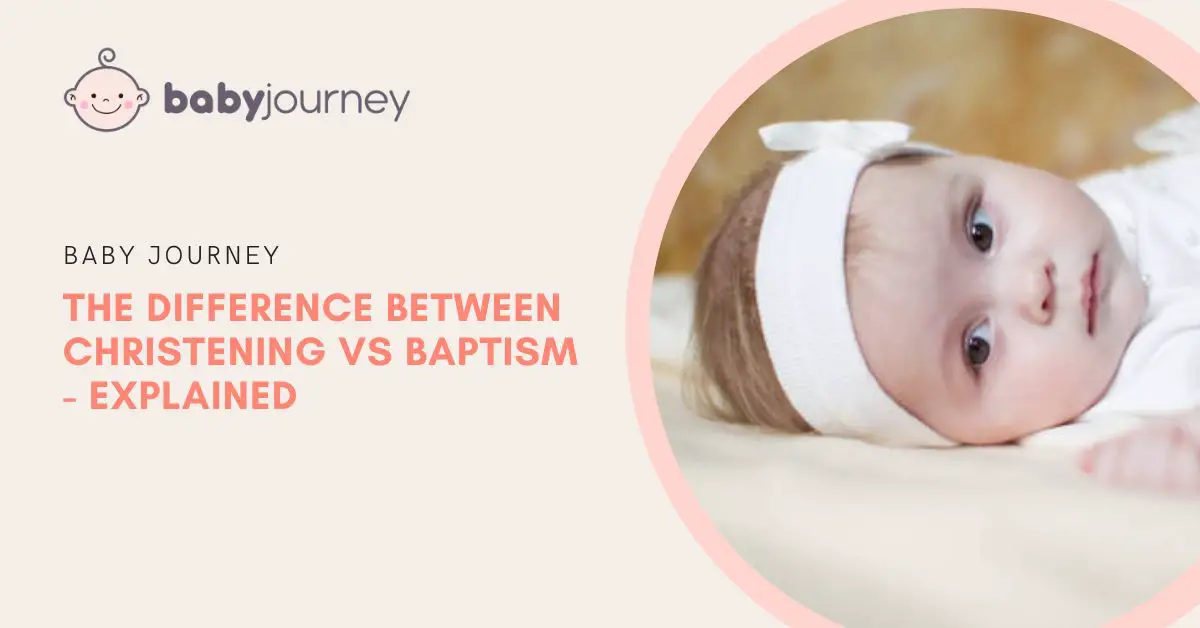Christening vs baptism may sound very similar and are used in the same context most of the time. However, would you be surprised if we were to tell you there is a vivid difference between baptism and christening?
Knowing this, it might do you good to be aware of using the words appropriately!
In this article, we look in detail at what christening and baptism are, separately, and how they are related to one another. In order to better understand the distinctions between the two terms, we will carefully examine their differences. So keep on reading to find out more!
What is Baptism?
As a purifying, cleaning, and rebirth symbol, the baptism ceremony performed entails the pouring or submerging of water on a person’s head or body. The majority of Christians view it as a public expression of their trust in and dedication to Christ.
Baptism also represents a person’s desire to follow Jesus Christ and their acceptance of him as their Lord and Savior. A person is welcomed into the church and admitted as a member of the Christian community upon baptism.
Besides, all previous sins as well as the original sin acquired from Adam and Eve are thought to be washed away by baptism, as it is viewed as just the beginning of a new life and an act of spiritual regeneration.

When it comes to baptism, different Christian denominations hold diverse beliefs and rituals. While some people perform adult baptisms, others baptize newborns. Some people baptize by pouring or showering water, while others completely submerge themselves in it.
Despite these variations, the doctrine that baptism is a hallowed act of entrance into the Christian faith connects all Christian traditions and is the unifying force behind this faith.
Related: Baby Dedication VS Baptism
What is Christening?
The baptism of a baby or a small kid is referred to as “christening” in various Christian churches. During the christening service, the kid is given a name and formally accepted into the Christian community.
During a baby christening ritual, the child is typically clad in white and is carried by their Christian parents or godparents in christening gowns, as water is poured over the child’s forehead or they are completely submerged in it. This represents the child’s cleansing from sin and entry into the Christian religion.

A child’s christening ceremony is seen as a significant occasion since it initiates small children into their spiritual journey and enrolls them in the Christian community. As part of their commitment to raising the child in the faith, the baby’s parents and chosen godparents also undertake to support the kid’s spiritual development.
While not all Christian denominations use the phrase “christening,” many perform the baptism of infants and young children, which is regarded as a significant sacrament or ordinance in the Christian religion.
Related: Baby Names Meaning God Answered Prayers
History of the Words ‘Baptism’ and ‘Christening’
The word “baptism” comes from the Greek word “baptizein,” which means “to immerse, dip or wash.” The term was originally used in Greek society to refer to dyeing cloth or leather by immersing it in a liquid.
Baptism originated from Jewish purification practices that required submerging oneself in water to be cleansed of sin and impurity. Christian adult baptism became a tradition after Jesus’ baptism by John the Baptist, a key character in Christianity.
Jesus’ disciples continued to baptize new Christians after his death and resurrection as a symbol of their acceptance of Jesus Christ, the Holy Spirit, and dedication to following him.
The word “christening” derives from the Old English verb “to make Christian,” or “cristenian.” It was originally meant to receive a baby or young kid into the Christian religion by baby’s baptism.
Baptism was normally only permitted for adult converts. Yet, as the church expanded and started baptizing infants, the phrase “christening” started to be used to refer to the baby baptism ritual exclusively for infants.
The Middle Ages saw a rise in the complexity of christening rituals, which now included naming the child, anointing him or her with oil, and presenting a lit candle.
The Differences Between Baptism and Christening
Although “baptism” and “christening” are frequently used interchangeably, there are some minor distinctions between the two in various faiths. Here is a compact baptism vs christening comparison:
The Difference in Significance
The act of submerging a person in the water or pouring water over the child’s head as a representation of their atonement for sin and introduction into the Christian religion is known as baptism. It is a rite or ordinance that many churches observe and is frequently connected to adult conversion or outward displays of faith.
By contrast, the term “christening,” which is more frequently used in some Christian traditions, refers particularly to the infant baptism of newborns, babies, or young children.
It is often a family-centered ceremony that includes the naming of the child and the dedication of the parents and godparents to raise the child in the Christian faith.
Further Reading: What Do Godparents Buy for Baptism
The Difference in Rituals
The focus and significance of each ceremony may differ slightly, even though the rituals of baptism and christening ceremonies may be similar in many respects.
While christening refers to the naming and welcoming of a child into the Christian community, baptism is recognized as a public confession of faith and devotion to Christ.

The naming ritual for a newborn child in some Christian traditions is referred to as a baby’s christening ceremony. It is not specifically stated in the Bible, but this ceremony typically includes a blessing prayer for both the kid and the parents.
The Religious Differences
In the Bible, baptism is described as a holy act of submission and identification with Christ and the Holy Spirit. As it represents the believer’s death to their old life and resurrection to new life in Christ, baptism is an outward manifestation of inner faith.
Generally, the Bible does not directly refer to the christening ceremony as a form of a religious rite, even while it stresses the significance of baptism as a sign of obedience and affiliation with Christ.
Several Christian groups have created the custom of christening to commemorate childbirth and bestow blessings for the child’s future.
FAQs
Can You be Baptized and Christened?
Depending on the particular Christian denomination and the church’s practices, it is possible to be baptized and christened simultaneously.
In some denominations, the acts of being introduced into the Christian religion through water are referred to as both baptism and christening ceremonies. It is best to speak with a pastor or church leader to find out more about the particular rituals and doctrines of that church.
Can You Have a Christening Despite Being Not Religious?
Christening is a religious ceremony that is typically performed within the context of a Christian church, and it involves a blessing or dedication of a child to God.
As a result, it is not relevant for someone who does not practice religion or who is not affiliated with a particular religious group.
However, to celebrate the arrival of a new child into their family, friends, and community, some non-religious individuals may still want to hold a naming ceremony or other secular celebration. These rituals can take on a variety of shapes and may reflect the family’s beliefs and values.
Can You Give a Christening Card for a Baptism?
Giving a christening card at an infant baptism is appropriate. When referring to the Christian sacrament of initiation, in which a person is formally received into the church, the terms christening or baptism are sometimes used interchangeably.
A christening card, along with a christening gift, can be a fantastic way to give your prayers for the child and family on this important occasion, as well as to convey your congratulations and best wishes.
Related: What to Write on a Baby Baptism Card?
Summary
The Christian ceremony of initiation is referred to by both the titles: baptism and christening. Some individuals do, however, distinguish between the two names. A person gets baptized when they are submerged in water or have water poured over them as a sign of their purity and acceptance into the faith.
On the other side, the christening ceremony frequently follows baptism. The child is formally named and welcomed into the church family during this ceremony. While baptism generally refers to the rite itself, in certain traditions the term “christening” is reserved solely for the ceremony to name a baby.
For better understanding, here’s a table to summarize it all for you.
|
Christening |
Baptism |
|---|---|
|
The naming ceremony that often accompanies the baptism. |
The act of immersing a person in the water or pouring water over them as a symbol of purification and admission into the faith. |
|
The formal act of naming the child and welcoming them into the church community. |
The sacrament of initiation into the faith. |
|
In some traditions, christening is used exclusively for the naming ceremony. |
In some traditions, baptism is used exclusively for the sacrament itself. |
|
Usually accompanied by the sign of the cross and the sprinkling of holy water. |
Usually accompanied by the sign of the cross and the use of holy water, but may also involve other elements such as oil, candles, and prayers. |
|
Focuses on the child’s faith journey and their entrance into the church community. |
Focuses on the spiritual transformation and admission into the faith of the person being baptized. |
|
May be viewed as a cultural or traditional event, rather than strictly religious. |
Typically seen as a religious sacrament with spiritual significance. |


 PARENTING TIPS
PARENTING TIPS







 PREGNANCY
PREGNANCY








 BABY CARE
BABY CARE








 TODDLERS
TODDLERS








 TEENS
TEENS








 HEALTH CARE
HEALTH CARE








 ACTIVITIES & CRAFTS
ACTIVITIES & CRAFTS








 CONTACT
CONTACT ABOUT
ABOUT



